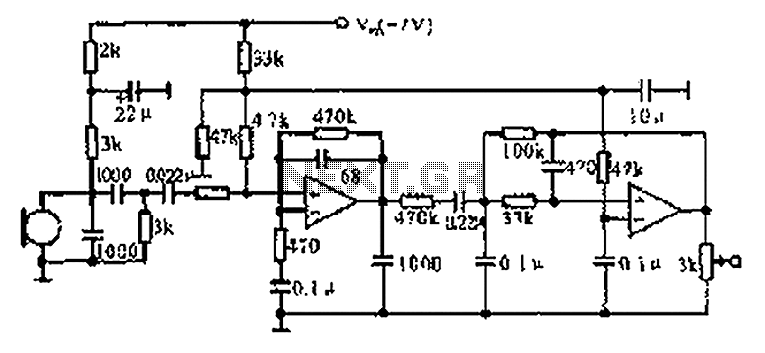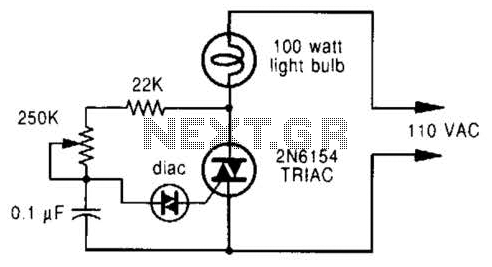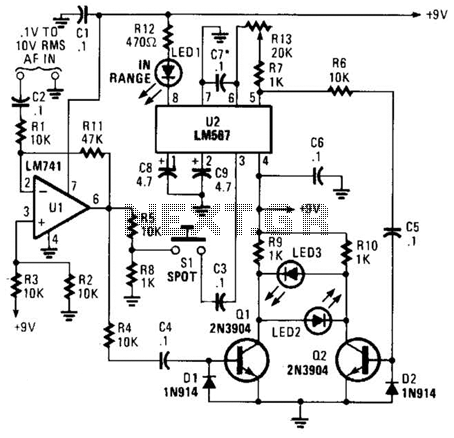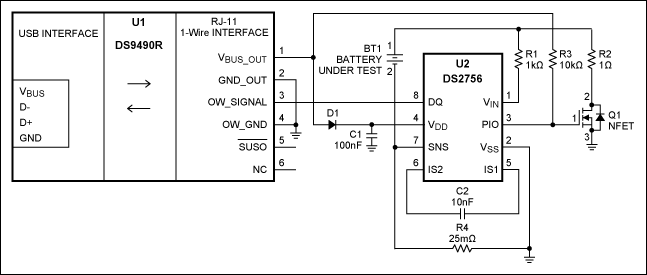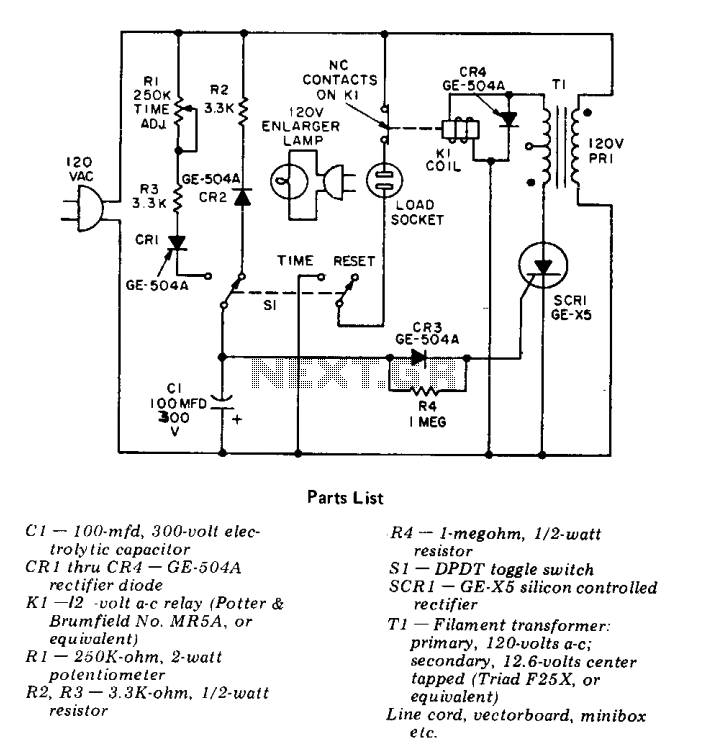
water level alarm circuit
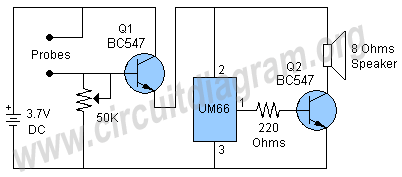
The schematic represents a water level alarm circuit. This circuit functions as a water level sensor and emits a melodious alarm sound when the two probes within the circuit detect the presence of water. This water level indicator circuit can be utilized to monitor water levels in various locations, such as swimming pools. To implement the circuit, attach the two probes at the desired water level, ensuring a gap of two to three inches between them.
The water level alarm circuit typically consists of a few key components: two conductive probes, a comparator or operational amplifier, a resistor, a piezo buzzer, and a power supply. The probes are positioned at specific heights to detect the water level. When water bridges the gap between the probes, it completes the circuit, allowing current to flow.
The operational amplifier is configured as a comparator. It compares the voltage across the probes with a reference voltage set by a resistor divider network. If the voltage from the probes exceeds the reference voltage, the output of the comparator switches state, activating the piezo buzzer. This buzzer generates an audible alarm, alerting users to the water level condition.
The circuit is powered by a suitable DC power supply, which can range from 5V to 12V, depending on the components used. Proper placement of the probes is crucial; they should not be too close to prevent false triggering due to minor fluctuations in water levels. Additionally, the probes must be made of a corrosion-resistant material to ensure longevity, especially in environments with varying water quality.
This water level alarm circuit can be effectively used in various applications, including monitoring water levels in tanks, aquariums, and swimming pools, providing a practical solution for water level management.Here is the schematic of a water level alarm circuit. The circuit will work as a water level sensor and will give a melodious alarm sound when the two probes in the circuit will detect water. You can use this water level indicator circuit to detect the level of water in any place for example in swimming pool, For using the circuit simply attach th
e two probes on the desired level of water on which you want the indication and make two to three inches gap between the two probes. 🔗 External reference
The water level alarm circuit typically consists of a few key components: two conductive probes, a comparator or operational amplifier, a resistor, a piezo buzzer, and a power supply. The probes are positioned at specific heights to detect the water level. When water bridges the gap between the probes, it completes the circuit, allowing current to flow.
The operational amplifier is configured as a comparator. It compares the voltage across the probes with a reference voltage set by a resistor divider network. If the voltage from the probes exceeds the reference voltage, the output of the comparator switches state, activating the piezo buzzer. This buzzer generates an audible alarm, alerting users to the water level condition.
The circuit is powered by a suitable DC power supply, which can range from 5V to 12V, depending on the components used. Proper placement of the probes is crucial; they should not be too close to prevent false triggering due to minor fluctuations in water levels. Additionally, the probes must be made of a corrosion-resistant material to ensure longevity, especially in environments with varying water quality.
This water level alarm circuit can be effectively used in various applications, including monitoring water levels in tanks, aquariums, and swimming pools, providing a practical solution for water level management.Here is the schematic of a water level alarm circuit. The circuit will work as a water level sensor and will give a melodious alarm sound when the two probes in the circuit will detect water. You can use this water level indicator circuit to detect the level of water in any place for example in swimming pool, For using the circuit simply attach th
e two probes on the desired level of water on which you want the indication and make two to three inches gap between the two probes. 🔗 External reference
